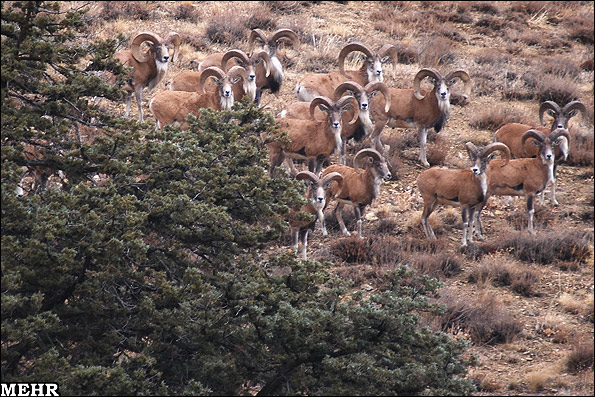Bakhtegan
This area has been protected since 1968. Covering an area of 242223 ha, this Fars Province located area was designated wildlife refuge and international wetland in 1975. The altitude range of 1560-2960 m, and mean annual precipitation and temperature of 230 mm and 15 C.
Bakhtegan national park divides the area into two northern and southern halves. There also exists the brackish-water Lake Tashk with an average depth of 0.5 m which joins Lake Bakhtegan when precipitation is sufficient. Wetlands and islands of this lake are suitable habitats for birds. Bakhtegan, with a surface area of 3,500 square kilometres (1,400 sq mi), is Iran's second-largest lake. It is fed by the Kor River. Several dams on the Kor River have significantly reduced waterflow into the lake, increasing its salinity and endangering the lake's populations of flamingos and other migratory birds.

The vegetation around the lake is mainly composed of juniper, pistache, mountain almond, Montpellier maple, almond, tamarisk, bean caper, wormseed, noea, gaimt fennel, brome grass, hawk nut, thyme, seepweed, glasswort, sedge, reed, cat’s tail and the endemic species of Hypericopsis. The refuge boasts a high animal biodiversity with 323 animal species identified. The most important animal species are wild goat, wild sheep, goitred gazelle, leopard, jungle cat, caracal, wolf, long-fingered bat, Dalmatian pelican, flamingo, crane, spoonbill, spotted eagle, marsh harrier, falcon, kestrel, squacco heron, little bustard, tern, monitor, cliff racer, small-scaled diadem snake, barbell fish, golden barb, aphanius, crap and artemia. The aquatic environment of this refuge attracts a great number of migratory birds every year.